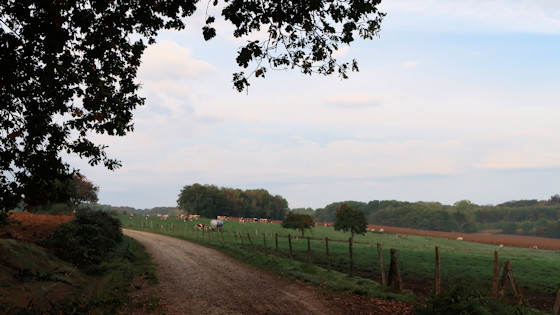
Early in the morning, our path leads us past peacefully grazing cows

Soon we are on a gravel road ...
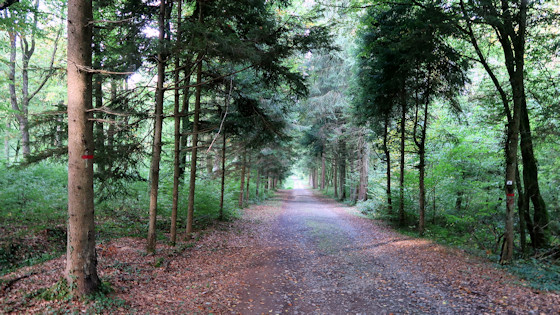
... and a little later in the forest.

At the end of the forest lies the inconspicuous village of Angeot with its Saint-Sébastien church. It has a turbulent history. In the 13th century, Angeot belonged to the county of Ferrette. In the middle of the 14th century, Angeot came under the sovereignty of the Habsburgs and bore the German name Ingelsott during this time. Together with the Sundgau, the village came under the French crown with the Peace of Westphalia in 1648. Angeot became the capital of a bailiwick consisting of two bailiwicks with a total of eight parishes. From 1793, the village belonged to the Département Haut-Rhin. In 1997, Angeot was merged with 12 other municipalities to form the Communauté de communes du Tilleul, which merged into the Communauté d'agglomération Grand Belfort in 2017.

We pass Angeot on the edge ...

.... and enter a forest again.

Here there is a nature reserve with a pond and time for a break.
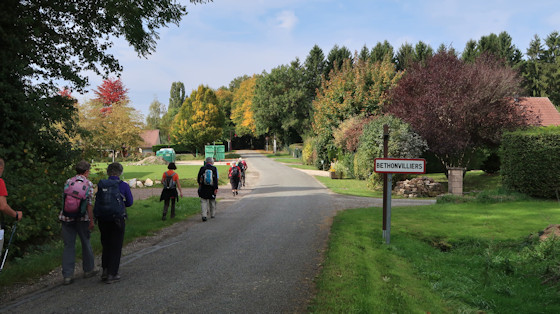
We continue on to Bethonvilliers. The peculiar name of the place does not come from Beton (concrete), but from Bethen. The place used to be called Bethweiler.

Colourful blossoms by the wayside

All bridges in the area have floral decorations.

Our picnic car is waiting for us in the car park in front of the community hall.

On the road between Menoncourt and Phaffans
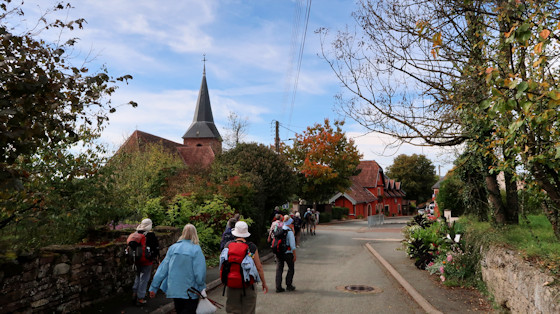
Notre-Dame de l'Assomption
The present church of the Assumption was built in two phases: The steeple dates from around 1700, while the nave was built in the Baroque style from 1726 to 1735.

Phaffans
Photos of the church where we held our reflection. For the picture of the interior of the church with the luminous stained glass windows, I spent some time at the computer and fitted in the separately photographed windows.

We leave the village of Phaffans.

View from the Way of St James towards the Vosges.

The next place is called Denney.
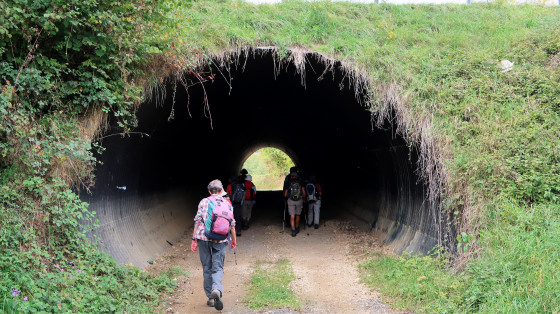
Here we have to pass under the motorway.
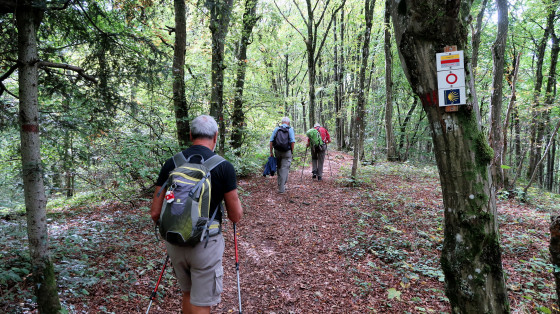
It's uphill and downhill through a forest outside Belfort.
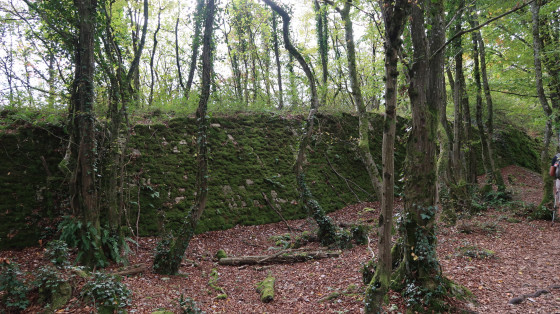
We approach Belfort and its widely scattered fortifications.

The Way of St James leads along the Fort de la Miotte.
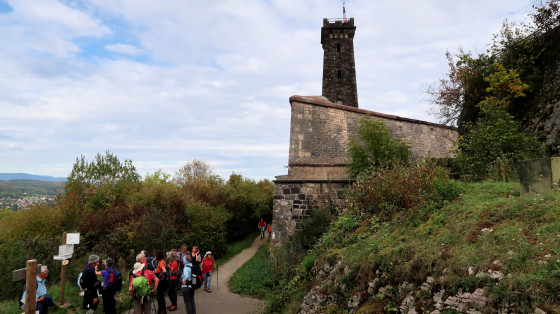
Belfort fortifications: Miotte Tower (Tour de Miotte)

Marching into the city

Our pilgrim hostel, the beautifully renovated Hotel Saint Christophe






